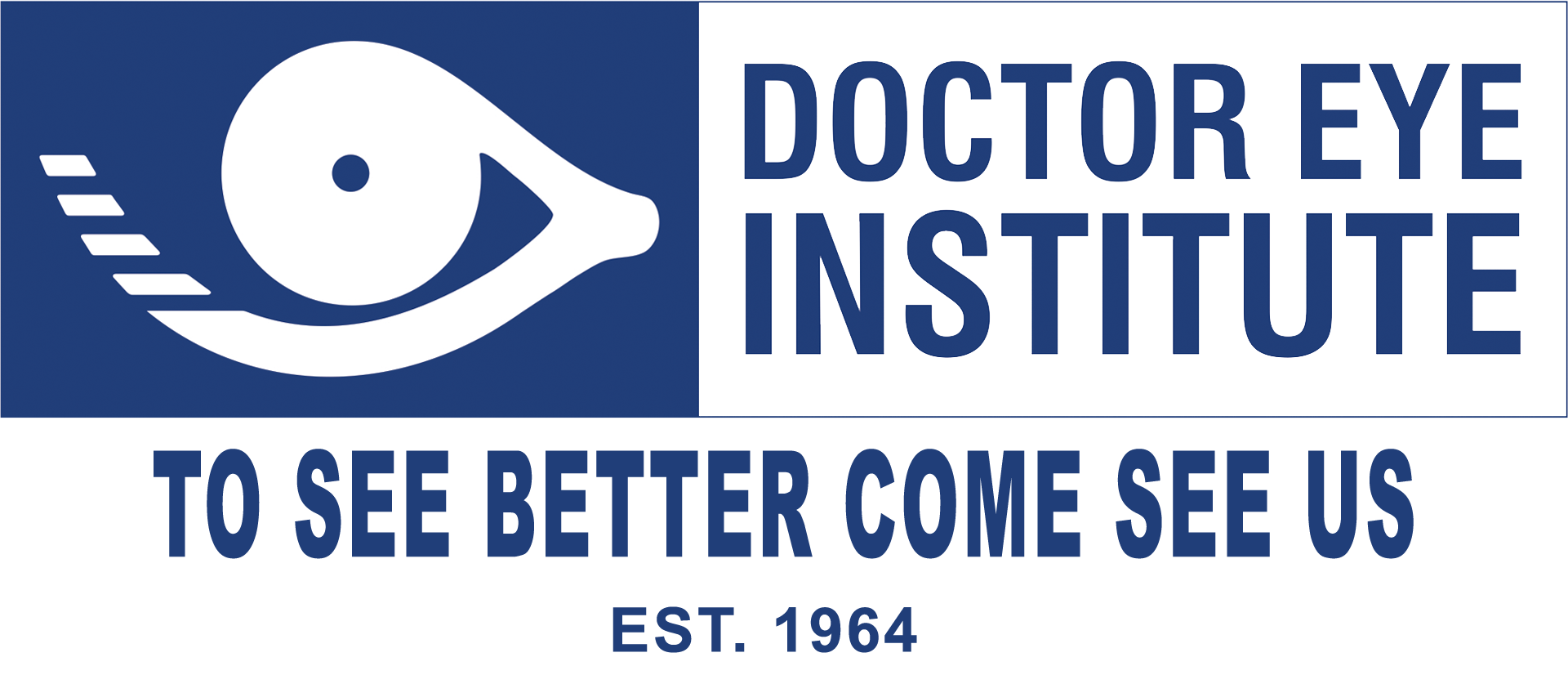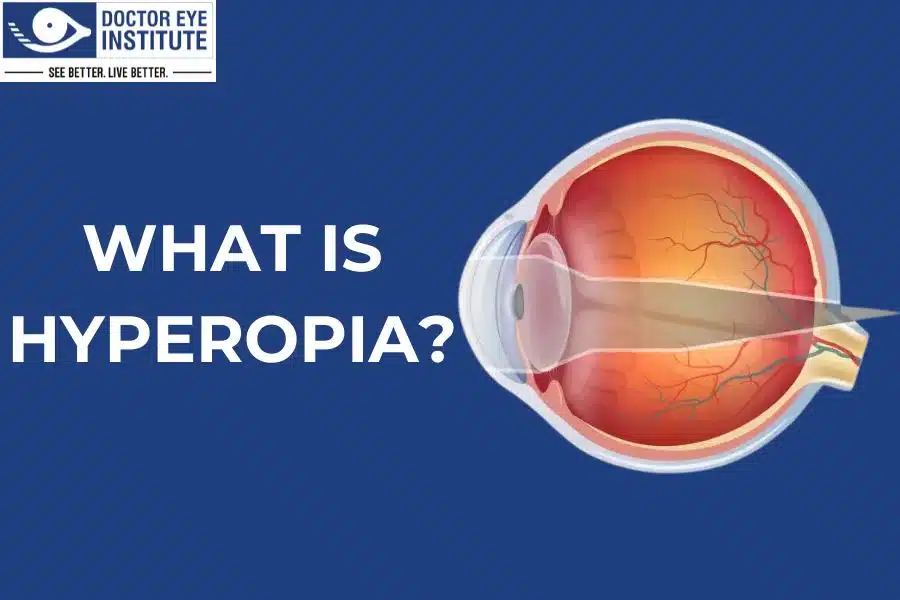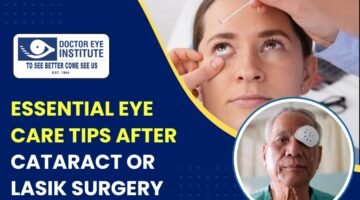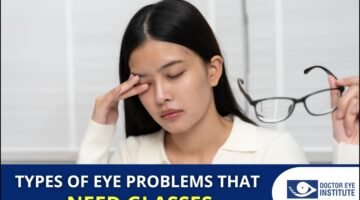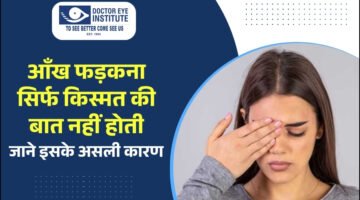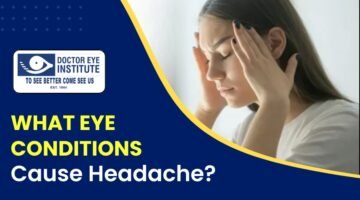What is Hyperopia? Understanding Causes, Prevention, and Treatment
Many of us have heard of farsightedness, or hyperopia, which is a common eye problem. Everyone needs to know what hyperopia is and why it matters, whether you have it or you’re involved in eye care.
Definition of Hyperopia:
Hyperopia is when you can see far-away things clearly, but things up close are blurry. This happens because the light going into your eye doesn’t focus properly on the retina, which is the part that senses light.
Importance of Understanding Hyperopia:
Understanding hyperopia is crucial for a few reasons. First off, it helps people spot the signs early, so they can get help sooner. That means faster treatment and better outcomes. Second, it helps eye doctors make the right diagnosis and treatment plan. Lastly, knowing about hyperopia encourages research into better ways to treat it and keep our eyes healthy.
How Hypermetropia Is Caused?
Explanation of Hyperopia’s Optical Characteristics
Hypermetropia, or farsightedness, happens because of how light behaves in our eyes. Normally, light rays should focus right on the retina, the back part of the eye. But in hyperopic eyes, the light focuses behind the retina instead. This can occur if the cornea (the clear front part of the eye) isn’t curved enough, or if the eyeball itself is shorter than usual.
Role of the Eye’s Anatomy in Farsightedness Development
The way our eyes are built also plays a big part in farsightedness. The cornea and lens work together to bend light so it lands where it should on the retina. But if there’s something off about their shape or size, like a slight abnormality, it can alter how light bends and cause hyperopia. Also, the length of the eyeball matters because it affects where images end up focusing.
Factors Contributing to Hypermetropia
Genetics is a big one if others in your family have farsightedness, you might be more likely to have it too. Plus, as we get older, our lenses become less flexible, making it tougher to focus up close. Sometimes, certain medical conditions or eye surgeries can also lead to farsightedness.
What Causes Farsightedness?
Family History: If your parents or close relatives have farsightedness, you might be more likely to have it too. Genes play a big part in this, but it doesn’t mean you’ll have the same level of farsightedness as them.
What You Do: Doing a lot of close-up tasks, like reading or using phones and computers for a long time, can strain your eyes. This strain might make farsightedness worse. Also, if you don’t have enough light when you read or have bad reading habits, it could make farsightedness symptoms more noticeable.
Getting Older: As you get older, your eyes change. The lens inside your eye becomes less flexible, which makes it harder to see things up close. This change, called presbyopia, often happens along with farsightedness, making it tougher to do close-up tasks as you age.
How To Prevent Farsightedness?
Lifestyle Changes to Prevent Farsightedness
Even though genes play a big role in farsightedness, there are things you can do in your daily life to help stop it from getting worse. Eating a balanced diet with lots of vitamins and minerals that are good for your eyes, like vitamin A, lutein, and zeaxanthin, can keep your eyes healthy. Also, it’s important to take breaks when you’re doing things up close for a long time, like reading or using a computer. And when you do read, make sure the lighting is good and hold the book or screen at a comfortable distance. These habits can reduce strain on your eyes and slow down the progression of farsightedness.
Why Regular Eye Check-ups Matter
Getting your eyes checked regularly is really important for catching and keeping track of farsightedness. Eye doctors can do thorough exams to find problems like farsightedness early on, which helps in treating them sooner. They can also spot other eye issues like glaucoma or cataracts, which might happen alongside farsightedness. So, seeing your eye doctor regularly is key to keeping your eyes healthy.
Ways to Slow Down Farsightedness
There are steps you can take to slow down how fast farsightedness gets worse and make it easier to see. Wearing glasses or contact lenses prescribed by your eye doctor can correct your vision and make things clearer. And if you have both farsightedness and trouble seeing up close as you get older (presbyopia), special lenses like bifocals or progressive lenses can help with both. These options can make a big difference in managing farsightedness and keeping your vision sharp.
Is Hypermetropia Curable?
Hypermetropia, or hyperopia, can be managed effectively through various treatment options. These options aim to correct the refractive error and improve vision for individuals affected by farsightedness.
- Glasses: You can get glasses specifically made to fix farsightedness. These glasses help by bending light in a way that it hits your retina just right, making things clearer whether they’re close up or far away.
- Contact Lenses: If glasses aren’t your thing, you can opt for contact lenses. These little guys sit on the surface of your eye and do the same job as glasses, but some people find them more comfortable and they give you a wider field of vision.
- Eye Surgery: There are surgeries like LASIK and PRK that can reshape your cornea, fixing the focusing problem in your eye. This can mean saying goodbye to glasses or contacts altogether.
However these treatments work can vary. Factors like how bad your farsightedness is, how your eyes are built, and which treatment you choose can affect the results. But for many people, glasses or contacts do the trick just fine for everyday tasks. And if you’re a good candidate, surgery can be a game-changer, Giving you long-lasting improvements.
What is High Hyperopia?
High hyperopia is a condition where the eye has trouble focusing on things up close as well as far away. When someone has high hyperopia, it means they have a significant amount of farsightedness. This can make everyday tasks like reading, driving, or using screens difficult because everything looks blurry.
Definition and Characteristics of High Hyperopia:
High hyperopia is when the refractive error in the eye is usually greater than +5.00 diopters. This means the eye’s ability to focus is really impaired, causing blurry vision both up close and far away. It can make simple tasks challenging and affect daily life.
Risks Associated with High Degrees of Farsightedness:
People with high hyperopia have a higher chance of developing certain eye problems like crossed eyes (strabismus), lazy eyes (amblyopia), or glaucoma. Because of these risks, they need to have regular eye check-ups and get help early to avoid more serious vision issues.
Special Considerations in Treatment Approaches:
Treating high hyperopia needs special attention because of how severe the vision problem is and the risks involved. While glasses and contact lenses can help, people with high hyperopia might need custom-made lenses or surgery to see clearly. This tailored approach helps them achieve the best vision possible.
Is Hyperopia Genetic?
Research suggests that genes play a big part in whether someone develops farsightedness, also known as hyperopia. These genes affect how the eyes grow and how well they can focus. Some people might have variations in these genes that make them more likely to have hyperopia.
There are different ways hyperopia can be passed down in families. In some cases, it’s like a dominant trait, meaning if one parent has it, there’s a good chance their child will too. Other times, it might be recessive, where both parents need to pass on the gene for their child to have hyperopia. And sometimes, it’s a mix of both genes and other factors.
If someone has a family history of hyperopia, it could be helpful for them to talk to a genetic counselor. These experts can look at their family’s medical history, explain how hyperopia might be inherited, and give advice on what steps to take to possibly prevent or treat it early on.
Does Hyperopia Improve With Age?
How aging affects farsightedness: Generally, farsightedness tends to stay pretty much the same as you grow older. But as you age, changes happen in your eyes that can make farsightedness worse. One big change is that the lens in your eye becomes less flexible, which makes it harder for you to focus on things up close. This can make your farsightedness symptoms more noticeable as you get older.
How your vision changes over time: As you get older and your farsightedness progresses, you might find it harder to see things up close. Reading small print can become tricky, and you might feel strain in your eyes when you’re doing tasks that require you to focus on things nearby. Another common age-related vision issue called presbyopia often goes along with farsightedness, making it even harder to see things up close.
How to deal with farsightedness as you age: Managing farsightedness in older adults involves a few different things. One option is to use glasses or contact lenses to help correct your vision. If you’re a good candidate, you might also consider surgeries like LASIK or lens replacement to fix the problem. It’s important to have regular eye check-ups to keep track of any changes in your vision and make sure you’re getting the right treatment.
How Hyperopia Is Corrected?
Overview of Corrective Lenses for Hyperopia
Corrective lenses are a common and effective way to manage hyperopia. These lenses work by bending light rays before they reach the eye, compensating for the refractive error and allowing the image to focus properly on the retina. There are two main types of corrective lenses used for hyperopia:
Convex Lenses: These are thicker in the middle and thinner at the edges. They help to focus light onto the back of your eye, fixing up that farsightedness. People with hyperopia, especially those who struggle with close-up stuff like reading, often use these.
Bifocal or Multifocal Lenses: These are like two or more lenses in one. They’re handy for people who not only have hyperopia but also struggle with reading up close, which often happens as we get older. Bifocals have a clear line between the different strengths, while multifocal blend them together smoothly.
Glasses and contacts are great because they’re easy and non-invasive. They come in all sorts of styles to suit your tastes and lifestyle.
Surgical Options for Treating Hyperopia
While corrective lenses are effective for many people with hyperopia, surgical interventions offer a more permanent solution by altering the shape of the cornea or lens. Some common surgical options for treating hyperopia include:
LASIK: This is a popular surgery where a laser is used to reshape your cornea, the clear part at the front of your eye. It’s like sculpting it to fix the farsightedness. Quick and effective!
PRK: Similar to LASIK, but instead of making a flap in your cornea, they remove a thin layer before reshaping. It’s a bit longer to recover from, but still a good option, especially if LASIK isn’t right for you.
Refractive Lens Exchange (RLE): This one’s like cataract surgery, where they swap out your natural lens for an artificial one to fix your vision. It’s great for people with hyperopia and also have trouble with close-up vision or a really high prescription.
Considerations in Choosing the Right Correction Method
When considering corrective options for hyperopia, several factors should be taken into account
How bad is your hyperopia? Mild cases might do fine with glasses or contacts, but if it’s severe, surgery could be a better bet.
Are your eyes healthy? Surgery might not be a good idea if you’ve got other eye issues going on.
What suits your life best? Some peoples are happy with glasses or contacts, while others want to ditch them for good with surgery.
Closing Reflections
So, in summary, hyperopia, or farsightedness as it’s often called, is quite common and can affect people of all ages. Here at Doctor Eye Institute in Mumbai, we know how both genetics and your surroundings play a role in getting it. But don’t worry! We’ve got solutions that work. Understanding what causes it, how to prevent it, and what treatments are available is super important for keeping your eyes healthy and your vision clear. It’s key to get regular check-ups with our skilled eye surgeons. That way, we can catch any issues early and tailor the treatment to you, giving you the best results possible.
FAQs: Frequently Asked Questions
Q1.What is hyperopia, and how does it differ from other vision conditions?
A. Hyperopia, commonly known as farsightedness, is a refractive error where distant objects are seen more clearly than nearby objects. Unlike myopia (nearsightedness), where distant objects appear blurry, individuals with hyperopia struggle with close-up tasks.
Q2. What causes hyperopia?
A. Hyperopia occurs when the eyeball is too short or the cornea is too flat, causing light rays to focus behind the retina instead of directly on it. Genetic factors play a significant role, but environmental factors can also contribute.
Q3. Can hyperopia be prevented?
A. While genetic predisposition cannot be altered, certain lifestyle changes can help prevent or minimize the progression of hyperopia. These include maintaining a balanced diet rich in eye-healthy nutrients, practicing good eye hygiene, and limiting excessive screen time.
Q4. Is hyperopia curable?
A. While hyperopia cannot be cured, it can be effectively managed through various treatment options. These may include prescription glasses or contact lenses to correct refractive errors, or surgical procedures like LASIK or PRK for more permanent solutions.

